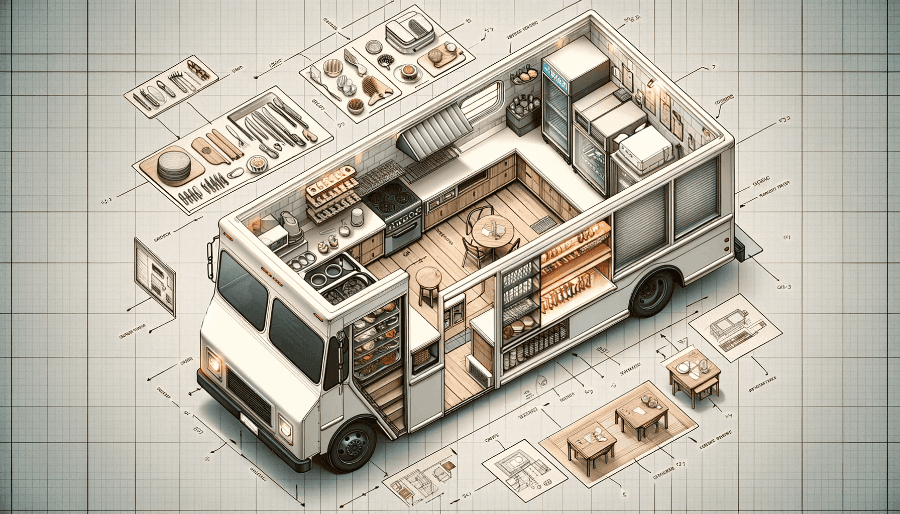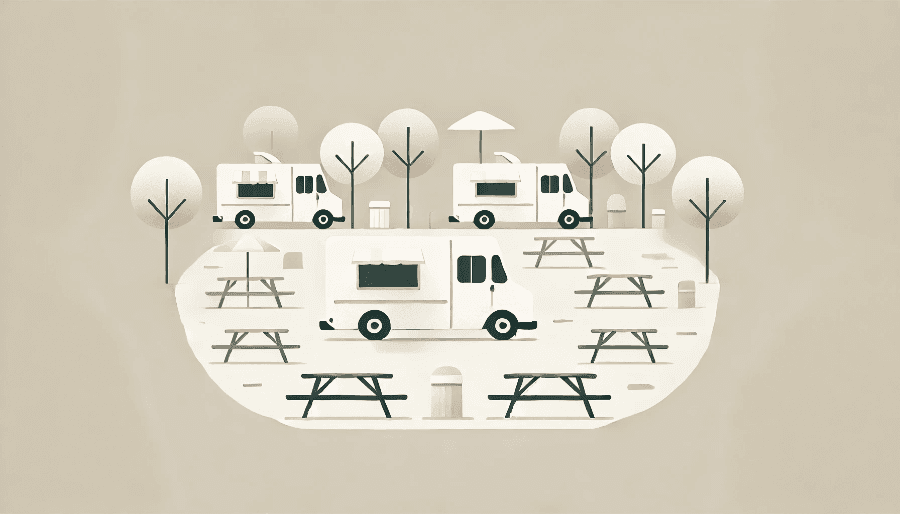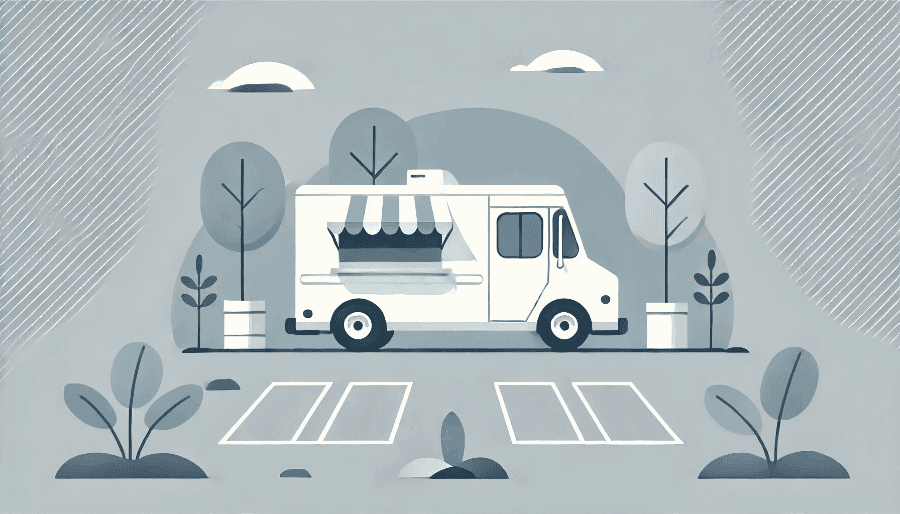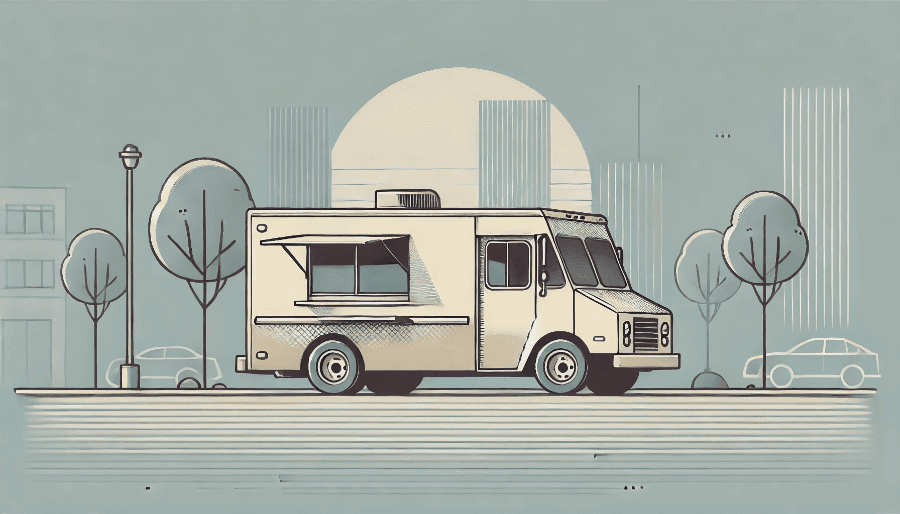 Welcome to the bustling world of food trucks, where culinary dreams hit the road and bring delicious dishes to the masses! In this dynamic industry, one key factor behind a food truck's success is its layout. A well-thought-out food truck layout ensures efficient use of space, allowing chefs to produce top-notch food quickly and interact with customers effectively. Whether you're a seasoned food truck owner or planning to start your own rolling restaurant, this guide will provide you with essential insights into optimizing your food truck layout for maximum efficiency and customer satisfaction. So, let's gear up and dive into the art of food truck design!
Welcome to the bustling world of food trucks, where culinary dreams hit the road and bring delicious dishes to the masses! In this dynamic industry, one key factor behind a food truck's success is its layout. A well-thought-out food truck layout ensures efficient use of space, allowing chefs to produce top-notch food quickly and interact with customers effectively. Whether you're a seasoned food truck owner or planning to start your own rolling restaurant, this guide will provide you with essential insights into optimizing your food truck layout for maximum efficiency and customer satisfaction. So, let's gear up and dive into the art of food truck design!
Understanding the Basics of Food Truck Layouts
What exactly is a food truck layout? In simple terms, it's the arrangement of your cooking, serving, and storage areas within the limited space of a truck. This layout plays a pivotal role in determining how smoothly your food truck operates. A well-designed layout ensures that you can cook, clean, serve, and manage payments without stepping on each other's toes.
Why is the layout so crucial? Here are a few reasons:
- Efficiency: A good layout speeds up service by minimizing unnecessary movement.
- Safety: Proper spacing and organization reduce the risks of accidents and injuries in a cramped space.
- Customer Experience: A smoother operation means faster service, which keeps the line moving and customers happy.
- Employee Satisfaction: When staff have enough space to work without constant interference, their job satisfaction and performance improve.
Challenges often arise from the limited space available in a food truck. Common issues include finding room for all the necessary equipment, ensuring enough workspace for staff, and creating an effective flow from food preparation to customer service.
Key Components of an Effective Food Truck Layout
To master your food truck design, you need to understand the different functional areas and how they contribute to a smooth operation. Here are the essential components:
-
Cooking and Preparation Area: This is where the magic happens. Your cooking area should have all the necessary equipment like grills, stoves, ovens, and prep tables. Arrange equipment to minimize movement and ensure that staff can easily access everything they need. For example, placing the prep area next to the cooking station can streamline the process of transferring ingredients.
-
Serving and Customer Interaction Area: This area should be designed for efficiency and a pleasant customer experience. Ensure that the serving window is accessible and that there is a clear path from the kitchen to the window. It’s also a good idea to have visual elements that attract and engage customers, like menu boards and display cases.
-
Storage Solutions: Ample storage is essential for a food truck's day-to-day operation. You need space for dry goods, refrigerated items, and cooking supplies. Utilize every inch of your truck by considering overhead storage, under-counter cabinets, and even external storage solutions if necessary.
By carefully planning these key areas, you can create a food truck layout that maximizes productivity and keeps your business running smoothly.
Design Tips for Your Food Truck Layout
Designing an efficient food truck layout is both an art and a science. Here are some practical tips to help you maximize your space and streamline operations:
-
Utilize Vertical Space: In a food truck, height is your friend. Use vertical space for storage by installing shelves and racks above your work areas. This keeps essential ingredients and tools within arm’s reach without cluttering your counters.
-
Ergonomic Arrangement: Arrange your equipment so that it follows a logical order in the cooking process. For example, place refrigeration and storage near the prep area, and have the prep area lead directly to cooking appliances. This reduces unnecessary movement, speeding up preparation.
-
Safety and Mobility: Ensure there is enough space for staff to move safely, especially when handling hot dishes or sharp objects. Non-slip flooring and well-placed handles can prevent accidents in a moving vehicle.
-
Efficient Work Triangles: The work triangle concept, used in many stationary kitchens, is also applicable in food trucks. The idea is to place the stove, refrigerator, and sink (or primary prep area) in a triangle to minimize walking distance between them.
-
Ventilation Systems: Proper ventilation is crucial, not just for removing cooking fumes but for keeping the environment comfortable for staff. Install high-quality exhaust fans and ensure that fresh air circulation is maintained.
-
Energy Efficient Appliances: Choose compact, energy-efficient appliances to reduce power consumption and avoid overcrowding your space. This is especially important in a food truck where power may be limited.
-
Adaptability: Have a layout that can be easily adapted for different menus or services. Modular equipment and counters on wheels can offer you the flexibility to change your setup as needed.
Innovative Food Truck Layout Ideas
To inspire your design process, here are some innovative layout ideas that have helped other food trucks stand out:
-
The U-Shape Layout: This layout surrounds the cook with appliances and counters on three sides, with the open side facing the service window. It’s great for maximizing space and keeps everything within reach.
-
The Open Central Layout: Place most cooking equipment around the perimeter of the truck and leave a central area open. This layout works well for trucks with multiple staff members, allowing for an efficient assembly line approach.
-
The L-Shape Layout: This layout has cooking and prep areas on one side and storage on the adjacent wall, creating an L shape. It’s ideal for trucks that need to separate the cooking and prep zones without sacrificing space.
-
The Galley Layout: A straight-line layout with equipment on both sides, like a narrow hallway. This is efficient for trucks with one or two people working, as everything is just a step or two away.
-
The Island Layout: If your truck has enough width, an island in the center can be a great way to add extra prep area and storage. This layout allows for cooking and preparation to happen on opposite sides of the island.
These innovative designs can serve as a starting point to think creatively about your food truck’s interior.
Common Mistakes to Avoid in Food Truck Design
A well-thought-out layout is key to a food truck’s functionality. Be sure to avoid these common design mistakes:
-
Overcrowding the Kitchen Area: While it’s tempting to pack in as many features as possible, overcrowding can lead to accidents and inefficiencies. Ensure staff have enough room to work comfortably.
-
Poor Ventilation: Without adequate ventilation, your truck can quickly become a sauna. Ensure your design includes quality ventilation systems to keep the air fresh and the environment cool.
-
Inefficient Customer Service Paths: Ensure that the path from where customers order to where they receive their food is clear and quick. Confusing paths can lead to slower service times and frustrated customers.
-
Underestimating Storage Needs: It’s crucial to have enough space for all your ingredients and tools. Running out of storage can lead to disorganization and frequent restocking trips.
-
Neglecting Energy Management: Using too many high-powered appliances without proper power management can lead to electrical issues. Balance your equipment’s power needs with what your generator and outlets can provide.
-
Ignoring Ergonomics: If your layout doesn’t consider ergonomics, staff may have a hard time working efficiently. This can lead to slower service and increased fatigue.
Avoiding these pitfalls will help you create a more effective and pleasant working environment inside your food truck.
How to Plan Your Food Truck Layout
Planning your food truck layout carefully can save you time and money while increasing your efficiency. Follow these steps to create an optimal setup:
-
Step 1: Measure Your Truck’s Dimensions. Before anything else, know your working space. Measure the interior dimensions of your truck, including height, width, and length, and take note of any fixed elements like wheel wells or windows.
-
Step 2: Sketch Out Your Layout. Start with a rough sketch of your layout. Use graph paper or a digital design tool to place your major equipment and storage areas. Remember to factor in space for movement and workflow efficiency.
-
Step 3: List Your Equipment and Needs. Write down all the equipment you need, like grills, ovens, fridges, and sinks. Also, list your storage needs for ingredients, utensils, and cleaning supplies. This list will help you understand how much space you need for each area.
-
Step 4: Consider Your Menu. Your menu directly impacts your layout. The equipment and space needed for a pizza truck are different from those required for an ice cream truck. Design your kitchen around your menu to ensure efficiency.
-
Step 5: Consult with Professionals. Once you have a basic layout, consult with a professional food truck designer or an experienced builder. They can provide insights and adjustments that improve workflow and meet safety standards.
-
Step 6: Use Design Software. There are various design tools available that can help you visualize your food truck layout in 3D. Software like SketchUp or AutoCAD can provide a more accurate feel for the space and help spot potential issues.
-
Step 7: Test and Iterate. Before finalizing your layout, do a walk-through with your equipment and staff, if possible. This can reveal practical improvements and adjustments to enhance functionality.
By following these steps, you can design a food truck layout that is not just efficient but also adaptable to your changing needs.
Technology and Food Truck Layouts
Technology can play a significant role in optimizing your food truck layout. Here are some technological tools and solutions that can enhance the planning and operation of your food truck:
-
Design and Visualization Tools: Use software like SketchUp, AutoCAD, or even simpler tools like Microsoft Visio to create detailed, scale models of your food truck interior. These tools can help you visualize space use and workflow more effectively.
-
Space Management Apps: Apps like MagicPlan and RoomSketcher let you input your truck’s dimensions and drag-and-drop fixtures and equipment into place. They can be a quick way to test different layouts.
-
Equipment Efficiency: Look for smart kitchen equipment that offers multiple functions; for example, combi ovens or multi-cookers that can save space and increase efficiency. Smart appliances also often come with energy-saving modes, which are beneficial for the limited power supplies in food trucks.
-
Inventory Management Software: Tools like Partender or SimpleOrder can help you keep track of your ingredients and supplies, ensuring that your storage spaces are used efficiently and effectively.
-
Ergonomic Analysis Tools: Use ergonomic guidelines and tools to analyze the physical workload on your staff. Ensuring that workstations are within comfortable reach and at appropriate heights can prevent fatigue and injuries.
Incorporating these technologies into your food truck layout planning can lead to a more efficient operation and a better working environment for your team.
Finalizing Your Food Truck Layout
Before you finalize your food truck layout, here are some last steps to ensure you are ready to hit the road successfully:
-
Review and Revise: Take your planned layout and critique it with your team. Look for any potential improvements or adjustments that could make operations smoother.
-
Prototyping: If possible, create a full-scale mock-up of your layout. Use cardboard or temporary materials to set up your equipment and storage. This trial run can help identify any practical issues before you finalize your design.
-
Feedback Loop: Don’t hesitate to seek feedback from experienced food truck owners. Their insights can help refine your layout to avoid common pitfalls and incorporate industry best practices.
-
Training and Drills: Once your layout is finalized, conduct training sessions with your staff. Efficient use of the space can be enhanced through practice and familiarity, which can lead to faster service times and better customer experiences.
-
Documentation: Document your final layout with detailed diagrams and notes. This will be helpful for future reference and can assist in training new staff or making adjustments down the line.
By carefully planning, reviewing, and testing your food truck layout, you can ensure that your mobile kitchen is not only efficient and compliant but also a pleasant workspace for you and your team.
Conclusion
Your food truck layout is more than just where you place your stove and sink; it’s the foundation of your business’s efficiency and customer experience. By creating an ergonomic design, you can make a space that supports fast, safe, and enjoyable service. Remember, a well-thought-out food truck layout adapts to your needs and grows with your business.
Find Your Food Truck's Next Home with Foodparks
Are you ready to roll out your dream food truck and delight customers with your culinary creations? Browse our open listing page today to explore dozens of available prime food truck parking spots across the US and Canada. Let’s make your food truck adventure a resounding success together!


